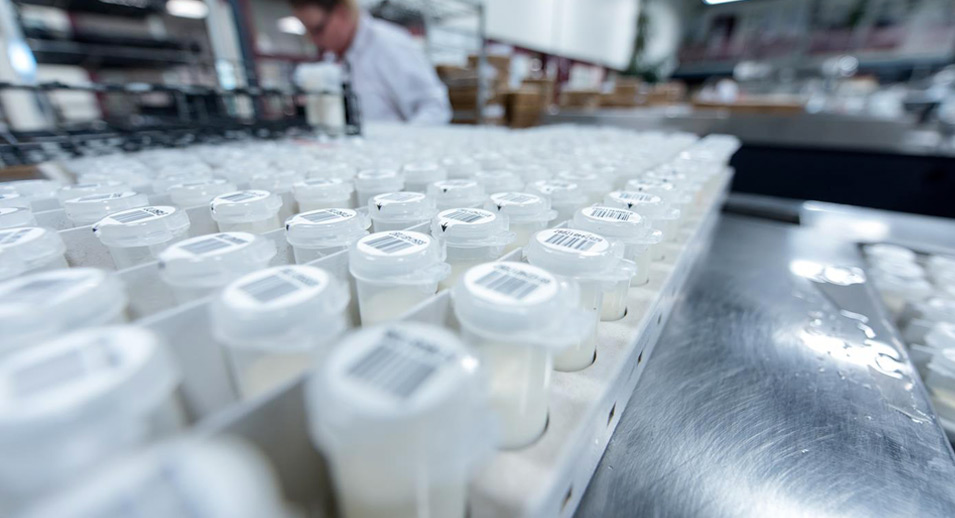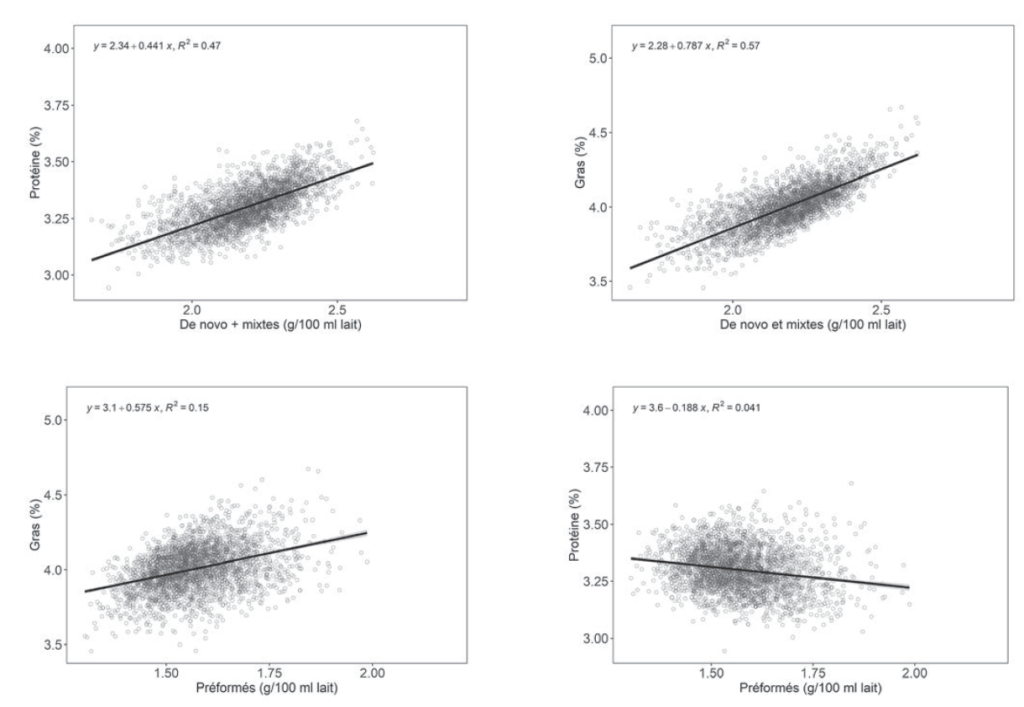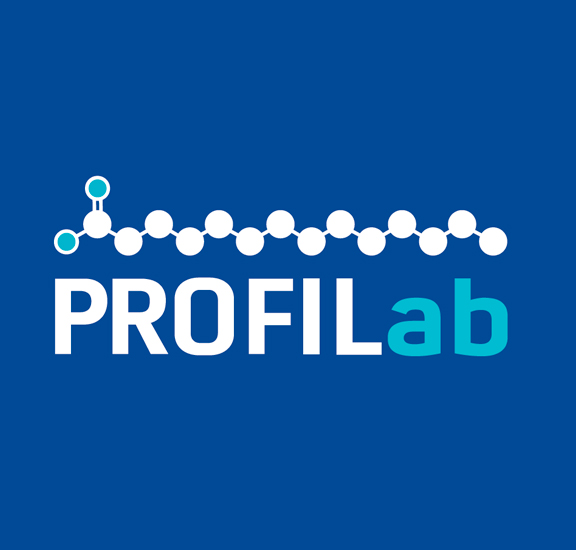Milk fatty acid profile: a new tool for herd management
- November 1, 2019
- Le Producteur de Lait Québécois Magazine
We can always squeeze more information from a sample – that’s our maxim! In addition to analyzing components, urea and BHB, testing for pregnancy and detecting certain diseases (e.g., leukosis), we now introduce the milk fatty acid profile.

The FA profile reflects rumen health, and producers will be able to use this new information to adjust their herd rations or feed management practices, among other things.
Lactanet’s Innovation and Development and laboratory teams have devoted close to four years to developing, fine-tuning, validating and standardizing the analytical procedure for the milk fatty acid profile. This type of analysis has been available for about two years now in some American labs, but because their equipment differs from ours, we needed to adapt the procedure to the analysers at Lactanet. To do that, we worked with Foss, a Danish firm that manufacturers these instruments, to maximize the results and increase the accuracy and rigour of the analyses.
The American model also comprised some imprecisions, so we took advantage of the work with Foss and the involvement of Rachel Gervais and Yvan Chouinard (Quebec’s two world-renowned experts on fatty acids) to refine the prediction algorithms based on the actual metabolism of the cow. We are now proud to provide you with PROFILab, a rigorous, validated tool that is sensitive to what is going on in your herd, combined with benchmarks specific to Quebec that will make it easier to interpret the results.
First the bulk tank
In the first phase of implementation, the PROFILab analysis will be done on bulk tank milk samples, taken every second day when milk is collected from the farm. The results will be available to all Quebec dairy producers who subscribe to this service, whether or not they are enrolled on milk recording. The test results will be available on the Lactanet, in the secure area commonly known as “My site”.
In the interactive report on screen, producers will be able to view graphs showing the curves representing de novo, preformed, mixed and polyunsaturated fatty acids, in addition to the basic milk components. Benchmark values for each analysis will also be displayed on the screen to assist in interpreting the results and maximize the potential use of the data. For herds on milk recording, benchmarks for different breeds, production levels and housing types will be displayed as well. For the herds for which this information is not available in the Lactanet database, each component will be compared to the provincial average.
At the same time, we will continue our development work toward the analysis of samples from individual cows (milk recording samples). These analyses will, among other things, provide a clearer picture of a cow’s energy status and rumen health, particularly for cows in early lactation.
A herd management tool that is one of its kind in the world
The milk fatty acid profile contains a wealth of information that can be used to maximize ration utilization and herd potential. People are talking about the FA profile elsewhere in the world, but we are the first to offer producers such a tool on a continuous, every-other-day basis, and to link it to milk recording performance and demographic data to provide benchmarks. This is additional information extracted from milk samples that are already collected and analyzed in our laboratories – an innovation that enables us to support you in better managing your herd.
How are the results interpreted?
There is no ideal numerical level for each type of fatty acid (FA). Herd values depend on breed, diet, production level, season and a number of other herd management and environmental factors. For that reason, comparisons with similar herds are the best way to find out where a herd stands and make sure it is achieving its potential. Monitoring changes over time provides more useful information than fixed threshold values, hence the great advantage of getting bulk tank results every second day.
Give preference to de novo fatty acids to increase component levels
De novo fatty acid levels are an indicator of rumen health, so this should be the first group of fatty acids to focus on. A high level of de novo FAs is a sign of good rumen health, but it also suggests that the cows could perhaps be “pushed” a little more to get a little extra milk.
Data for Quebec confirm that de novo fatty acids (alone or combined with mixed FAs) have the strongest relationship to milk fat and protein (Figure 1). Hence, anything that can be done to boost the synthesis of de novo fatty acids will have a positive effect on components. Minimizing sorting, ensuring healthy rumination by providing adequate effective fibre, providing the rumen with enough degradable protein, and encouraging several feedings per day are all factors that have a positive impact on de novo fatty acids.
Figure 1. Correlation between different types of fatty acids (de novo, preformed and mixed) and milk components (fat and protein)

Lastly, mixed fatty acids often follow de novo FAs (indicating synthesis in the mammary gland) or will increase substantially when a feed with high palm oil content is added to the diet.
On the other hand, the relationship between preformed fatty acids and milk components is not very strong, but preformed FAs seem to be a good indicator of dry matter intake and, of course, total fatty acid intake.
What if de novo levels are low?
Low de novo levels are an indication that the rumen is not functioning properly. Either the cow is suffering from acidosis (in which case the level of polyunsaturates will be high, since biohydrogenation is not happening as it should), or the rumen is lacking in nutrients (rumen digestible starches or degradable protein; in this case, polyunsaturate levels will usually be normal or low). A bulk tank urea analysis will confirm which of the two nutrients is in short supply.
How can PROFILab be used at herd level?
A fatty acid profile of bulk tank milk every second day provides useful information that serves firstly to assess rumen health in the herd, and also to maximize ration utilization. In herds with lower than average fat levels (about 3.6-3.8 kg/hL), for instance, the cows may be experiencing mild ruminal acidosis (a frequent occurrence at these levels). If that is not the case, then there may be a shortage of rumen available nutrients, which would disrupt the normal functioning of the rumen and, consequently, the synthesis of de novo fatty acids.
Likewise, if the ration is modified or an additive is added during certain periods of the year (e.g., palm oil), the effect can be seen rapidly and the metabolism evaluated, even if total fat seems to have remained much the same. The fatty acid profile is interpreted in relation to the basic components (fat, protein and urea), taking into account events that occur in the herd (e.g., a series of calvings in a short period of time).
In the short term, consulting the fatty acid profile on the Lactanet site regularly (once a week) when all is well, and more often (every second day) when there is a problem or a change has been made to the ration or to management practices, seems to be a sound strategy. Eventually, the report could generate alerts to inform producers that the results indicate a change in the herd’s status.
How to make the most of this new tool
In addition to support from your advisor, detailed notes and close monitoring of any changes to feeding or management practices are your best allies in getting the most out of this new tool. The fatty acid profile detects any number of small changes that may appear to be insignificant: a change in forage that went unnoticed, a few too many cows in the high-production group, an error in the mixer on a busy morning, a ration that looked ideal on paper, etc.
Interpreting the results may seem complex. To take full advantage of this new tool, don’t hesitate to consult a Lactanet advisor to get answers to all your questions.
A recap of the most important fatty acids in milk …
Milk contains roughly 400 different fatty acids, but most of them occur in extremely low concentrations. Only about 10 are found in significant proportion. The main fatty acids can be quantified with an infrared analysis, so the analysis can be done at the same time as the regular milk components (fat, protein, urea, lactose, SSC…) in the milk recording or milk payment sample. In six seconds, we now see the total composition of a milk sample, including the main fatty acids:
- de novo FAs: are indicators of rumen health. These short-chain fatty acids (14 or fewer carbons) are synthesized in the mammary gland from butyrate and acetate, two volatile fatty acids that derive from ruminal fermentation;
- mixed FAs: 50 per cent are synthesized in the mammary gland and 50 per cent come from feed or body fat reserves. These FAs all comprise 16 carbons. Mixed FA levels increase when palm-oil-based products, for example, are added to the ration;
- preformed FAs: long-chain FAs (those with 15 carbons and 17 carbons or more) that reflect fat intake (fat contained in forages, corn, concentrates, soybeans…) or the mobilization of body fat reserves (particularly high in cows in early lactation);
- polyunsaturated fatty acids: most of the FAs contained in forages and concentrates have several double bonds in their structure. These polyunsaturated FAs have antimicrobial properties that make them toxic to the rumen. Ruminal bacteria have adapted to this by developing a defense mechanism that enables them to modify these fatty acids, gradually transforming them into saturated FAs, which have no double bonds and are more easily integrated into their cell membranes. This process is called biohydrogenation and is linked to good rumen function. When ruminal bacteria are functioning effectively, some polyunsaturated FAs do show up in milk, but at acceptable levels. If the concentration of polyunsaturated FAs starts to rise, it is probably due to an increased intake of polyunsaturates (e.g., a change in forage, addition of soybeans, addition of flaxseed, for example) or a problem with rumen function (e.g., ruminal acidosis).

This project is funded through the Innov’Action agri-food program under the Canadian Agricultural Partnership, as part of an agreement between the governments of Canada and Quebec.











